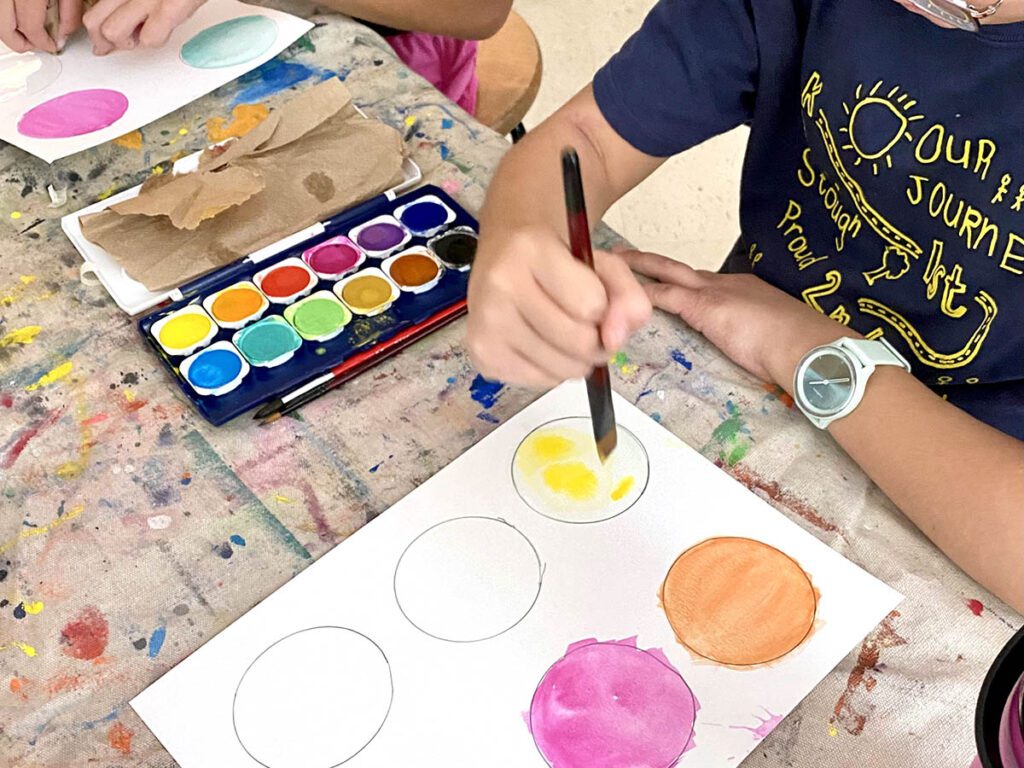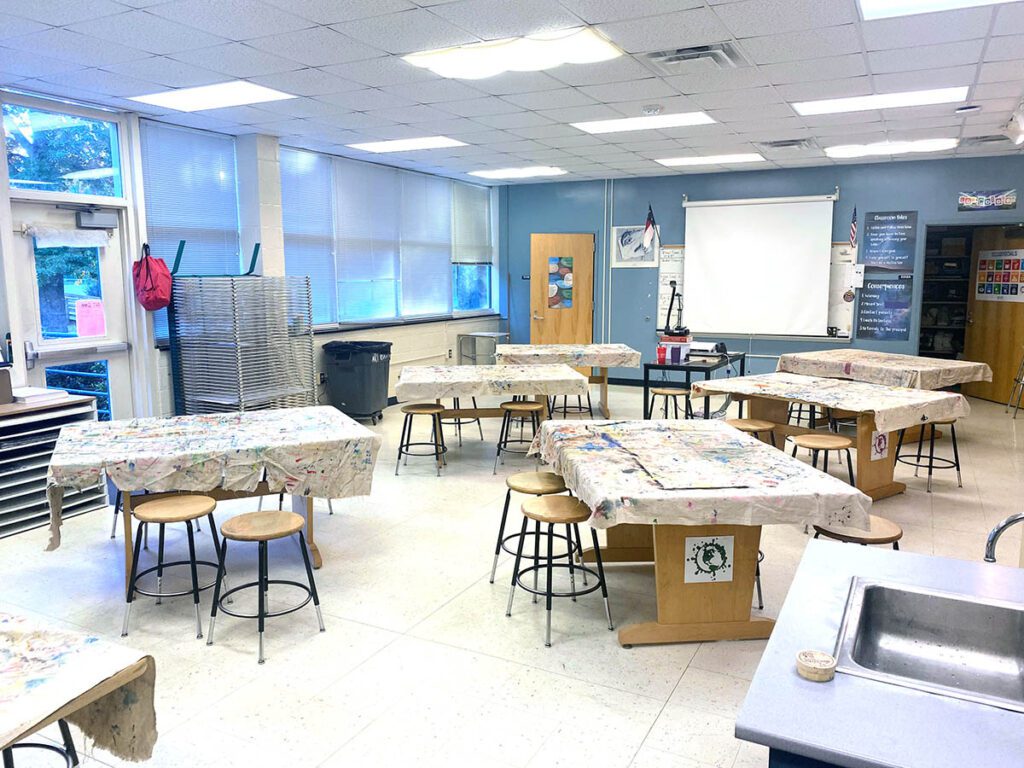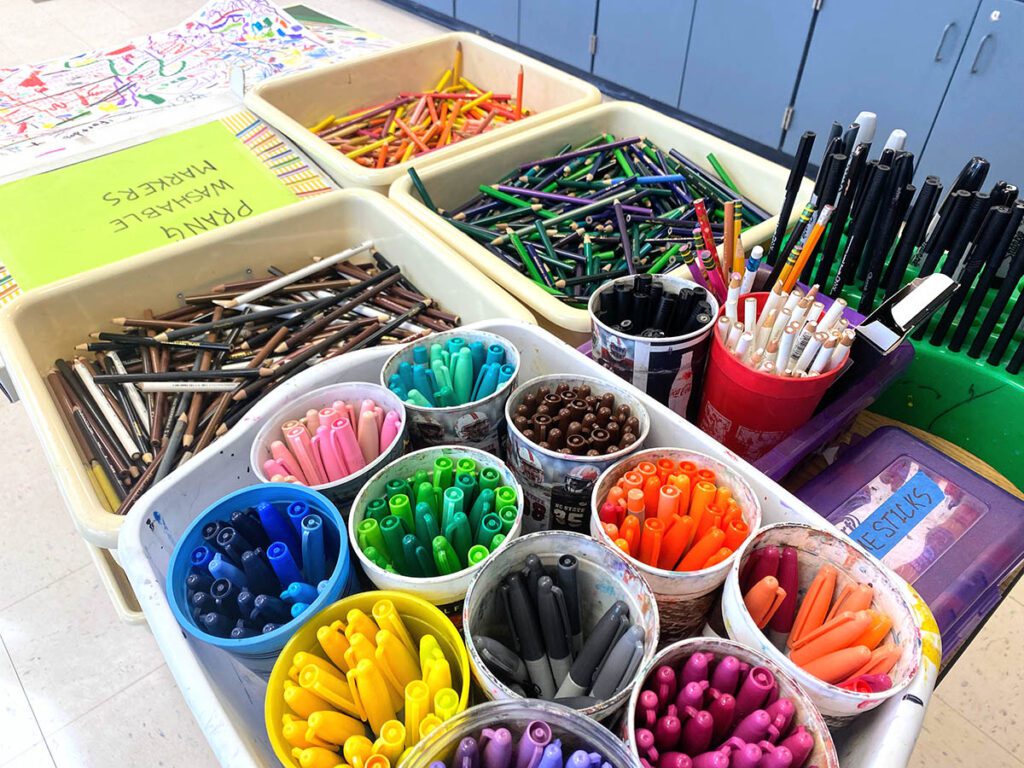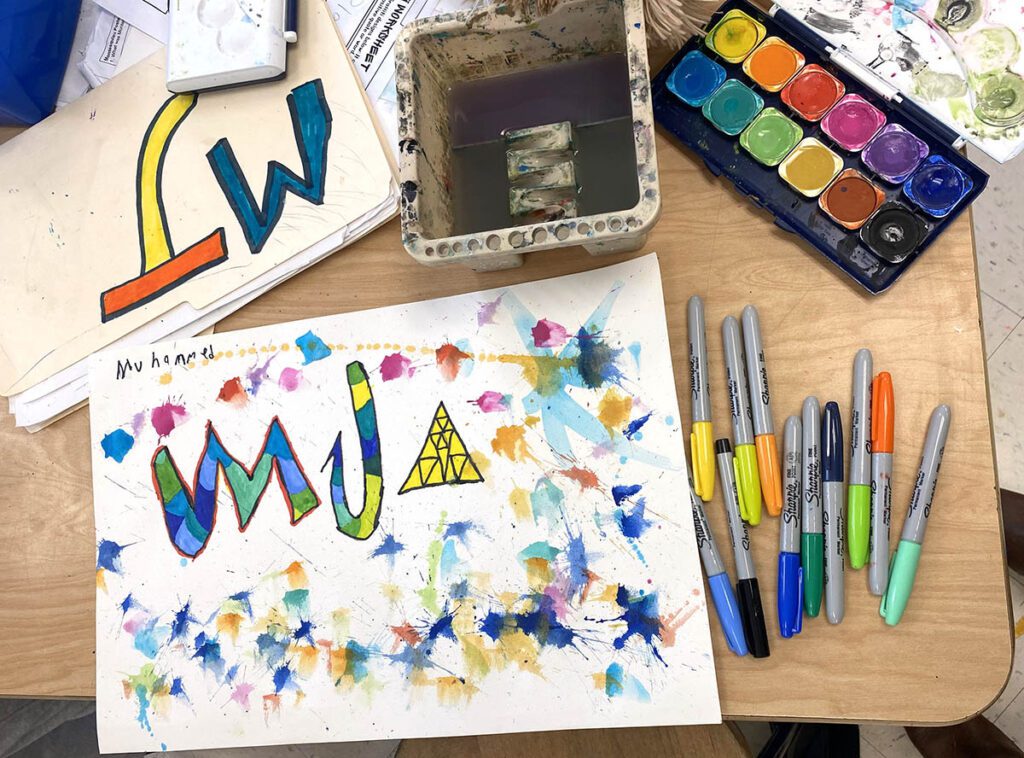Art teachers, take a well-deserved bow! You’ve made it to the end of another school year and have undoubtedly grown and learned a lot along the way. As you reflect on the past year, think about the advice, techniques, and approaches you discovered that worked wonders in your classroom. We gathered insights from art teachers across the country; from the deep to the practical, this advice brings relevant and impactful tips for the upcoming school year. Let’s dive in to see what everyone said about three main areas: classroom management, interacting with students, and your teaching practice. So sit back, relax, and grab a pen to celebrate our successes and learn from each other as we head into a new school year!
Keep reading for practical and profound tips to save for next school year!

Classroom Management
The art room can be a chaotic place! There are so many extra supplies to manage, artworks of all shapes and sizes to store, and multiple classes of students coming in and out all day long. For a mini-series packed full of classroom management tips, watch Run the Art Room on YouTube.
Here are four takeaways from this year to improve your classroom management plan:
- Procedures will make or break your day.
Julianna McRae is an elementary art teacher in Charleston, SC. She applied TAB principles to her classroom this year. Students loved the four centers she created, and they kept the room tidy. For more on how to bring collaborative TAB centers to your room, check out this article. - Without classroom management, you can’t teach, and students can’t learn.
Romney Coleman, a K–5 art teacher, explains why building rapport with your students is important. She says they don’t have to like you, but they do have to feel like you like them. - Sometimes, the process is just as important as the product!
Michelle Parven, an elementary art teacher in Massachusetts, shared this nugget of wisdom. We often focus on the end product, but students often learn more through the process. - If you do it for them, all they learn is you do it better.
Kelly Herman McCart, an art educator in Pennsylvania, reminds us of this concept. Doing things for our students in the art room may be the easiest option at times, but it doesn’t give them the challenge of learning for themselves. In order to give our students creative confidence, we need to give them the space to try it on their own.

Interacting With Students
We wouldn’t be art teachers if we didn’t have students! Not only do we need our students, but we strive to have positive relationships with them. We want them to enjoy attending art class and feel like it’s a safe place where they can explore and take risks.
Here are some encouraging reminders:
- Be the adult you needed when you were younger.
One art teacher reminds us we can support students while also healing our own hurts from the past. - Don’t react, but respond.
Ruth Pitman, a Canadian art educator, says responding to situations rather than reacting is the best way to keep our cool. Take deep breaths, pause, then respond. This helps our classroom management be less reactive. - The students won’t remember what you taught them, but they will remember how they felt in your classroom.
Katherine Beckner is a high school art teacher who said students pick up on the environment we create in our room. Art teachers have a big say in what kind of classroom we run and how students feel about it. - Be yourself!
Liz Earlywine shares that students can tell when we are not being real with them. Be yourself, and your art teaching style will evolve over time. - Many students just want someone to listen to them and care.
Another teacher explains how art teachers can be our students’ “constant.” Many students do not have consistency in their lives, but we can provide that for a small part of their day.

Teaching Practice
Over time, we discover our teaching style and philosophy through what works best for us, our school, and our students. This comes through a lot of trial and error and a growth mindset!
Here are some practical and deep tips for your teaching practice and work-life balance:
- Listen to what is essential and do what is enduring.
Kari Searls, a high school art teacher, explains, “The world of education changes faster than the weather.” Things are always shifting with new initiatives every few years. Instead of getting overwhelmed by the details, step back and look at the big picture. What’s vital to art education for you? - You have the rest of your career to master it; you don’t have to do it all the first year.
Nichole Simpson is a K–5 art teacher who reminds us we will not have everything perfect. Instead, grow, adapt, and learn as you go. - Make every day fun, and take one day at a time.
Corinne Browning says laughing with her students builds a bond with them. It makes them feel cared for and important. - Give everyone (even yourself) a fresh start the next day.
Alicia Thompson, an elementary art teacher, says we can allow ourselves to feel bad about a negative experience but to let it go the next day. Just like you give students a fresh start each class, we all deserve a fresh start after a rough day! - There will always be more work to do, so leave at the end of the day.
Tess Yinger, a K–8 educator in California, and Nancy Verduzco both advocate for art teachers to implement healthy work-life boundaries to prevent burnout. There is always going to be more to do!
What can you do with this advice now so you don’t forget it next year?
The art teacher community is the best because we can learn so much from each other. Now that we have compiled all of the advice for you, save what resonated most so you can apply it next year. Your future self will thank you!
Below are some ways to creatively compile the advice for later:
- Create an art teacher mission statement or mantra.
Display it in your room to remind you why you teach. - Create a mood board or collage.
Use this as a visual representation of the tips. - Keep a list where you can see it every day.
Where do you spend the most time in your art room? Stick it on your desk, post it on your closet door, or make it your desktop background! - Set reminders on your phone.
Do you struggle with a healthy work-life balance? Set an alarm or reminder on your phone to turn off all work email notifications at a certain time each day. - Reflect on your year and learning in a journal or notebook.
Make this a fun sketchbook prompt! Jot down things you learned this past year and pair them with sketches or collages. Take it a step further by posting your work on your social media platforms to encourage and equip other art teachers. - Lead a small professional development.
Grab some art teacher friends or sign up to lead a full-on workshop at a back-to-school event in the fall. Share the advice you learned with others!

As another school year comes to a close, it’s time to take a moment to reflect on all you have accomplished as an art teacher. Your hard work, dedication, and passion for the arts have undoubtedly made a positive impact on your students. As you head into summer break, take the time to recharge and reflect on what worked well this past year and what you would like to improve. With all of the valuable insights and lessons learned, you’ll be ready to hit the ground running when the new school year begins. So here’s to a well-deserved break and a bright future in art education! Grab a cold drink, and let’s raise a paintbrush to another successful year in the books! Here’s to making more memories and, more importantly, more art!
What is one piece of advice you would give to a new art teacher?
Share your biggest lesson learned this past year!
Magazine articles and podcasts are opinions of professional education contributors and do not necessarily represent the position of the Art of Education University (AOEU) or its academic offerings. Contributors use terms in the way they are most often talked about in the scope of their educational experiences.





